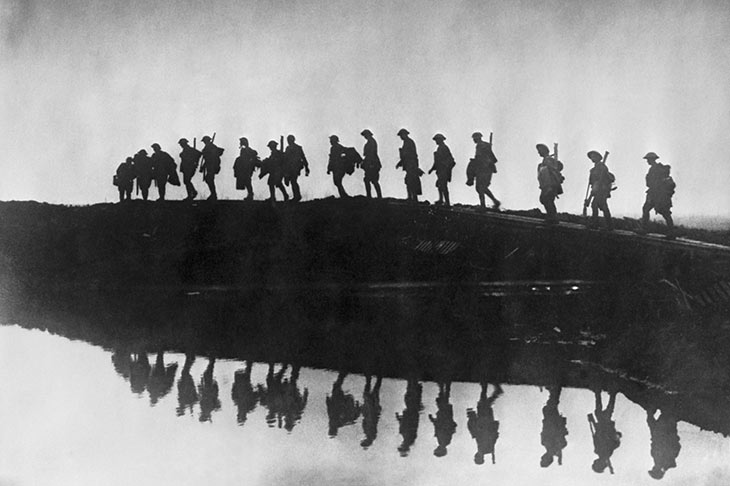I came up on the TGV yesterday from the Midi to northern France and it went like the clappers. I fell asleep zipping through stony, sun-baked vineyards and olive groves and woke an hour later in dairy country obscured by rain. What I had hoped for was an empty carriage or at least a socially distanced one, but this particular Sunday train was packed to the rafters. A woman behind me sneezed at my head from one end of France to the other. A bloke across the aisle was soaked in sweat, his head lolling this way and that on the bends and he looked as though he might have to be carried off the train. I went north to walk the Somme battlefield for nine days and think about my old Mum, who passed away last September. If my tour is curtailed by my own death from Covid-19, I can’t imagine a more illustrious resting place.
I was bitten by the first world war bug about three years ago. Thus far I’ve conscientiously stuck to reading about the events chronologically. I’m still on 1914: the clash of arms, the war of movement, the cavalry charges with bamboo lances, the officers waving infantry forward with swords, and the gradual annihilation of the British Expeditionary Force, the only professional army in the field. I’ve enjoyed 1914 so much that I am reluctant to move on to the grim static slog of 1915. But I have made a few guilty excursions into narratives of the Somme battle in 1916 and I’ve studied the battlefield maps. Furthermore my grandmother’s brother was blown up at the southern end of La Boisselle village on 9 July 1916 and lies under a white Portland headstone in Bécourt Military Cemetery, and I thought I would pay him a visit on the 104th anniversary.









Comments
Join the debate for just £1 a month
Be part of the conversation with other Spectator readers by getting your first three months for £3.
UNLOCK ACCESS Just £1 a monthAlready a subscriber? Log in